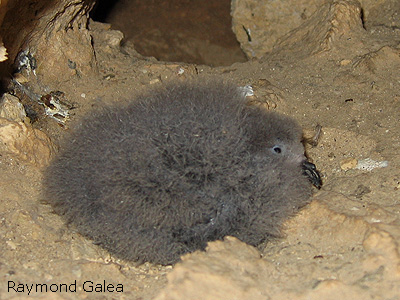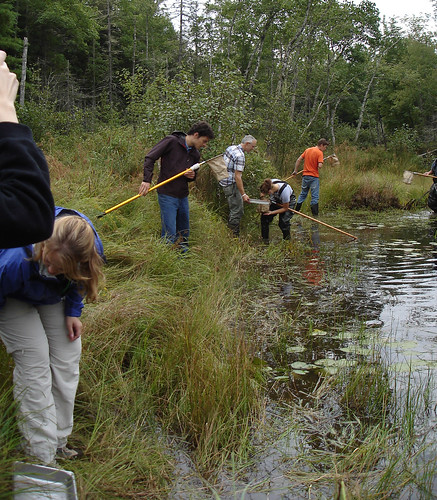(Special issue of Frontiers in Ecology and the Environment devoted to citizen science. Image courtesy of the ESA.)
According to the authors--a trio of researchers from the U.S. National Park Service, Boston University, and Cornell University--citizen science is not a modern invention, but rather something that has been occurring "for most of recorded history." Indeed, since science-minded individuals could not really pursue their passion as a full-time career until the late 19th century, nearly all "scientists" before this time were actually citizen scientists--people who made a living in other ways but, "because [they had] an innate interest in particular topics or questions," spent their free time performing research.
Even as early as the 17th century, citizen scientists were developing the sort of sophisticated collaborations and networks that professional researchers use today--and all without the aid of social media. For instance, the authors describe a Norwegian bishop who assembled an army of clergymen who could increase his sample sizes by sending him observations and collected specimens. These sorts of relationships allowed researchers to obtain organisms in far-flung locations that they could never visit themselves. Linnaeus is another early ecologist who benefited from these collaborations; the development of his classification system was greatly advanced by his ability to examine countless specimens provided by other amateur researchers.
(Citizen scientists monitoring butterflies in Wiltshire. Image courtesy of Dr. Yoseph Araya and his terrific article on how to become a citizen scientist.)
While it's easy to focus on "armchair scientists" who pursued science just for fun, there were also a number of individuals whose interest in data was much more practical. According to the authors, these include French winemakers, who have been recording grape harvest days for more than 6 and a half centuries, and Japanese court diarists, who, similarly, have been noting the dates of cherry blossom festivals for more than a millenium. Data have been provided not just by the botanically minded, but also those who work with animals: Hunters and fishermen have also kept remarkable records detailing which species were captured, where, and how large individuals are. Cumulatively, all of these numbers are incredibly useful to modern researchers who are interested in investigating changes in species' morphology, population distributions, and phenology (or the timing of events) over time.
The authors note with some sadness that amateurs have, in many cases, become marginalized over the past 150 years, during which time scientific research has emerged as a full-time profession; while many people still conduct scientific research, it is much harder for them to report their findings in respected journals and, therefore, to advance their fields. However, the authors report that there are two major roles of citizen science in modern research: First, to facilitate large-scale and/or geographically diverse projects, and, second, to undertake projects that professionals would (or could) not ordinarily do on their own. One example of the first variety is the North American Breeding Bird Survey (BBS), which provides ornithologists with a huge dataset on nesting activities in both Canada and the U.S. Without the help of volunteers across the continent, professionals would be hard-pressed to come up with the finances and manpower to collect the amount of data generated by the BBS. An example of the second variety of citizen science is Maryland's Save Our Streams project, a locally-founded effort to "monitor, protect, and restore" the state's streams. Such projects, which may also be referred to as "community science" or "participatory action research," may be too locally focused to be interesting to professional researchers; that said, the success of the Save Our Streams project has led it to be used nationally as a model for similar community science programs.
(Henry David Thoreau, naturalist, writer, and citizen scientist. Image courtesy of Wikipedia.)
For anyone wondering whether they've collected some useful observations over the years, the authors point out that datasets come in all shapes and sizes, including specimens, photographs, point counts, and size measurements. Even if the topic seems pretty specialized, it might still be useful in a greater ecological context. Henry David Thoreau, for instance, collected a list of first flowering dates, first leaf-out dates, and first arrival dates of migratory birds in Concord, Massachusetts; his observations have been continued over the years by an unbroken line of other citizen scientists. Analysis of the data has revealed that the timing of these events has changed over time, and also that plants are changing more quickly than birds. One particularly appealing characteristic of Thoreau's dataset is the fact that it was collected in a well-documented, systematic way--something that professional researchers would like to see for other citizen science data, as well. (If you do have a dataset, it's a good idea to jot down some notes on how it was collected, when, and where.)
Overall, the authors see a promising future for citizen science. When coupled with modern advances in communications and transportation, our renewed interest in this pursuit could help engage the public in research projects, improve scientific literacy and interest in science, and educate participants on the species, processes, and habitats that they are studying. Academics should also benefit, since an increased awareness of the scientific process will likely increase support and improve public opinion towards scientists, as well as providing data that could lead to valuable new insights.
---
Miller-Rushing, A., Primack, R., and Bonney, R. 2012. The history of public participation in ecological research. Frontiers in Ecology and Evolution 10(6):285-290.














